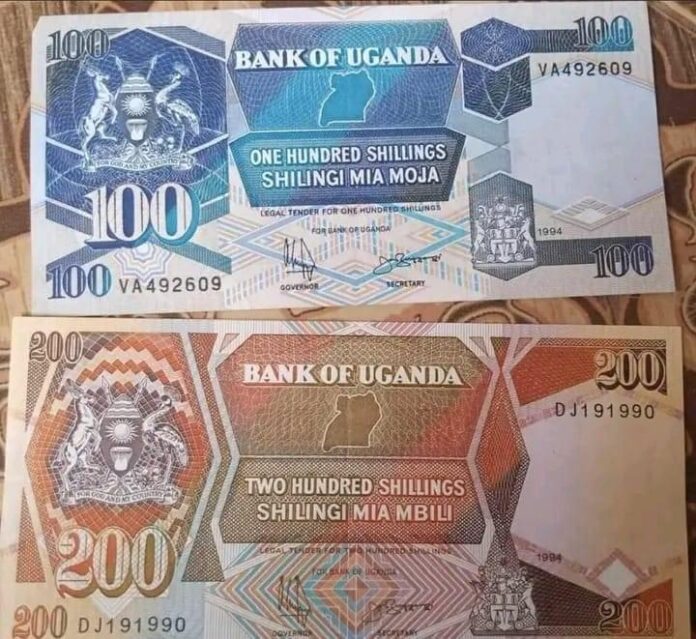The evolution of money in Uganda reflects a transition from traditional forms of exchange to modern currency systems. Here is an overview of the major stages in the evolution of money in Uganda:
The Barter System in Uganda:
The barter system in Uganda was a traditional method of exchange where goods and services were directly traded without the use of money. In this system, individuals or communities would exchange items they had in surplus for items they needed.
The barter system in Uganda varied depending on the region and the specific needs of the people involved. Common items traded included agricultural produce such as grains, livestock, fruits, vegetables, and handicrafts. For example, a farmer might exchange a portion of their crop for a cow, or a craftsman might trade their handmade products for food.
The value of items in the barter system was typically determined through mutual agreement between the parties involved. Factors such as scarcity, demand, and quality played a role in establishing the relative worth of different goods.
The barter system allowed people to acquire necessary items without the need for a standardized medium of exchange like money. However, it also had limitations, such as the need for a double coincidence of wants (finding someone who wanted what you had and had what you wanted) and difficulties in conducting complex transactions.
Over time, as societies evolved and economies became more complex, the barter system in Uganda gave way to the use of various forms of currency and monetary systems, enabling easier and more efficient exchanges of goods and services.
Cowrie Shells in Uganda:
Cowrie shells were widely used as a form of currency in Uganda during certain periods of history. Cowries are small, shiny seashells that were brought inland through trade networks.
In Uganda, cowrie shells were valued for their beauty and durability, and they served as a medium of exchange. They were used for various transactions, including trade, payments, and as a store of value. Cowries were particularly popular in areas near water bodies, such as Lake Victoria and the River Nile, where they were more readily available.
The use of cowrie shells as currency in Uganda had several advantages. They were easily recognizable, portable, and durable. Their uniformity in size and quality made them suitable for standardizing trade. Additionally, cowries had value beyond their use as money; they were also used as decorative ornaments and symbols of status.
However, the use of cowrie shells as currency also had limitations. Their availability was dependent on trade routes and connections with coastal areas where the shells were sourced. This meant that their supply could be limited, and their value could fluctuate based on availability and demand.
With the advent of colonial rule and the introduction of external currencies, the use of cowrie shells as currency gradually diminished in Uganda. Today, cowrie shells are no longer used as a mainstream form of currency but hold historical and cultural significance, often being used in traditional ceremonies, jewelry, or artistic expressions.
Arab and Indian Coins in Uganda:
Arab and Indian coins were used as a form of currency in Uganda, particularly during the pre-colonial and early colonial eras. These coins were introduced through trade networks and interactions with Arab and Indian traders in East Africa.
Arab and Indian coins were typically made of copper or silver and featured various designs and inscriptions that represented their respective issuing authorities. They were generally accepted and circulated alongside other forms of currency, such as cowrie shells, within the local economy.
The arrival of Arab and Indian traders brought a wider range of coins to Uganda, which expanded the options for monetary transactions. These coins provided a more standardized and widely recognized medium of exchange compared to the earlier barter system or the use of cowrie shells.
The use of Arab and Indian coins in Uganda facilitated trade and commercial activities, as they were widely accepted in local markets. They played a significant role in the exchange of goods, services, and commodities, contributing to the development of local economies and the growth of regional trade networks.
However, with the establishment of colonial rule and the introduction of formal colonial currencies, the prominence of Arab and Indian coins gradually declined in Uganda. These external currencies became the primary means of exchange, and the use of Arab and Indian coins diminished over time.
Today, Arab and Indian coins in Uganda hold historical and numismatic value, often sought after by collectors and enthusiasts interested in the rich cultural and economic history of the region.
Colonial Period Currency in Uganda:
During the colonial period in Uganda, the British introduced their own currency to facilitate trade and economic activities. The currency used during this time went through several changes as the region was under British rule as below;
British East Africa Company Currency: In the late 19th century, the British East Africa Company issued its own currency specifically for use in Uganda. These early colonial currencies consisted of banknotes and coins that were introduced to standardize monetary transactions in the region.
Link to Indian Rupee: Initially, the currency used in Uganda was linked to the Indian rupee, which was widely used in British India and other parts of the British Empire. The exchange rate between the Ugandan currency and the Indian rupee was maintained to facilitate trade and economic ties between the two regions.
East African Currency Board: In 1919, the East African Currency Board was established to issue a common currency for British East Africa, which included Uganda. The board introduced the East African shilling, which became the official currency of the region, including Uganda.
Conversion to Ugandan Shilling: After Uganda gained independence in 1962, the East African shilling was replaced by the Ugandan shilling as the official currency. The Ugandan shilling was introduced to symbolize the country’s sovereignty and independence from British colonial rule.
During the colonial period, the currency in Uganda played a crucial role in facilitating trade, taxation, and economic activities under British administration. The introduction of a standardized currency system helped streamline monetary transactions and contributed to the development of the region’s economy.
Independence and Ugandan Shilling:
After gaining independence from British colonial rule on October 9, 1962, Uganda introduced its own national currency called the Ugandan shilling. The Ugandan shilling replaced the East African shilling, which had been the common currency for British East Africa, including Uganda.
The introduction of the Ugandan shilling was a significant step towards symbolizing Uganda’s sovereignty and economic independence. The new currency served as a reflection of the country’s national identity and provided a means for conducting monetary transactions within its borders.
The Ugandan shilling was initially issued in banknotes and coins of various denominations, representing different values. These denominations included notes such as 5, 10, 20, 50, 100, 500, 1000, 5000, 10,000, and coins of smaller denominations.
Over time, the design, security features, and denominations of the Ugandan shilling have undergone changes to adapt to evolving economic and technological needs. New banknotes and coins have been introduced to incorporate enhanced security features, improve durability, and address inflationary pressures.
The Ugandan shilling remains the official currency of Uganda to this day, and it plays a crucial role in the country’s economy, serving as a medium of exchange for goods, services, and financial transactions. The Bank of Uganda, as the central bank, is responsible for managing and regulating the issuance and circulation of the Ugandan shilling, ensuring its stability and integrity within the financial system.
The Ugandan shilling continues to be an essential component of Uganda’s economic infrastructure, supporting trade, investment, and financial activities both domestically and internationally.
Changes in the Uganda Shilling:
The Ugandan shilling has undergone changes in its design, denominations, and security features over time. These changes have been implemented to enhance security, improve durability, and accommodate inflationary pressures.
Design: The design of the Ugandan shilling banknotes has evolved over the years. Newer banknotes feature updated artwork, vibrant colors, and cultural symbols that represent Uganda’s heritage and diversity. The designs often showcase prominent figures, landmarks, flora, fauna, and historical events.
Denominations: The denominations of the Ugandan shilling have been adjusted to meet changing economic needs. Higher denomination banknotes, such as 5,000, 10,000, 20,000 and 50,000 shillings, have been introduced to facilitate larger transactions and reflect the increased value of goods and services over time.
Security Features: To combat counterfeiting and enhance the security of the currency, new banknotes have been equipped with advanced security features. These features include holographic strips, watermarks, special inks, security threads, and other elements that make the banknotes difficult to reproduce.
Introduction of Coins: Alongside banknotes, coins have been introduced in smaller denominations to facilitate everyday transactions. Coins in denominations such as 50, 100, 200, 500, and 1000 shillings are commonly used for smaller purchases.
Replacement of Old Banknotes: Periodically, older banknotes are phased out and replaced with new designs and security features. This replacement process helps maintain the integrity and authenticity of the currency.
Management by the Central Bank: The Bank of Uganda, as the central bank, is responsible for overseeing the issuance and management of the Ugandan shilling. The central bank continually monitors economic factors, such as inflation and monetary policy, to ensure the stability and proper functioning of the currency.
These changes in the Ugandan shilling reflect the ongoing efforts to improve the currency’s security, durability, and functionality within the country’s economic landscape. The modifications also align with global best practices in currency design and aim to maintain public trust in the monetary system.
Digital Payments and Mobile Money Services in Uganda:
Digital payments and mobile money have gained significant traction in Uganda, revolutionizing the way financial transactions are conducted as explained below;
Mobile Money Services: Mobile money refers to the use of mobile phones to perform financial transactions. In Uganda, mobile money services have become immensely popular. Companies like MTN Uganda (MTN Mobile Money) and Airtel Uganda (Airtel Money) offer mobile money platforms that allow users to send and receive money, make payments, purchase airtime, and access other financial services.
Convenience and Accessibility: Mobile money services have brought financial services to previously underserved populations in Uganda. With just a mobile phone and a registered mobile money account, individuals can securely send and receive money, pay bills, and conduct various transactions. Mobile money has bridged the gap where traditional banking services are limited, particularly in rural areas.
Agent Networks: Mobile money transactions are often facilitated through a network of agents. These agents, typically local individuals or small businesses, assist users with cash deposits, withdrawals, and other transactions. They act as intermediaries between digital and physical currency, making mobile money accessible to those without a formal banking relationship.
Financial Inclusion: Mobile money has played a crucial role in promoting financial inclusion in Uganda. It has provided access to financial services for the unbanked and underbanked populations, empowering them to participate in the formal economy, save money, and conduct secure transactions. Mobile money has brought basic financial services to individuals who previously relied solely on cash or informal methods of money storage.
Integration with Other Services: Mobile money platforms in Uganda have expanded beyond basic transactions. They have integrated with various services such as utility bill payments, merchant payments, e-commerce, and international remittances. This integration has made mobile money a versatile tool for individuals and businesses, offering convenience and efficiency in managing financial transactions.
Regulatory Framework: The Ugandan government, through the Bank of Uganda and other regulatory bodies, has established guidelines and regulations to ensure the safety, security, and stability of mobile money services. These regulations promote consumer protection, anti-money laundering measures, and compliance with Know Your Customer (KYC) requirements.
The widespread adoption of digital payments and mobile money in Uganda has transformed the financial landscape, enabling individuals and businesses to conduct transactions more efficiently and securely. These services have contributed to financial inclusion, economic growth, and improved access to financial services for a large segment of the Ugandan population.






